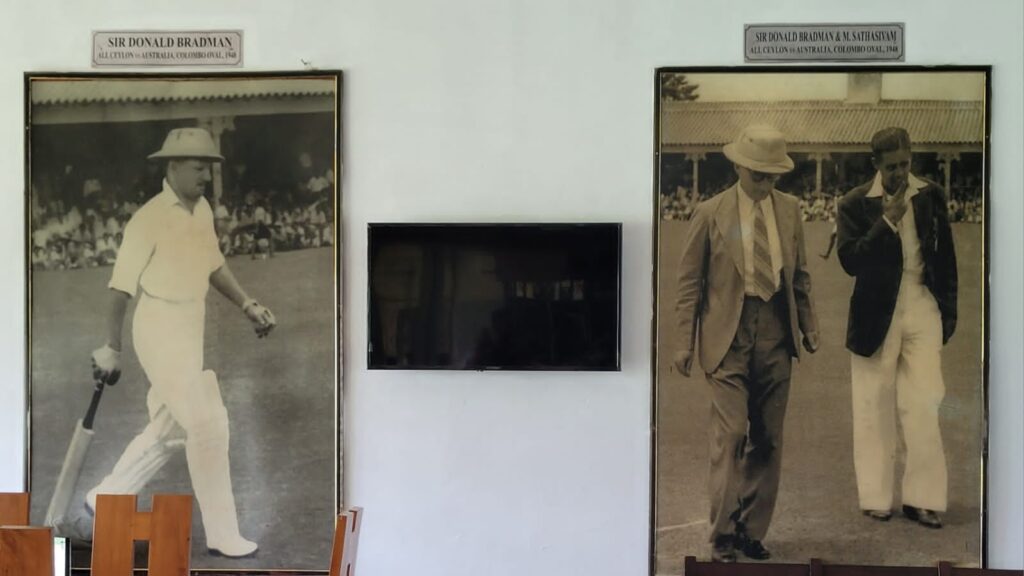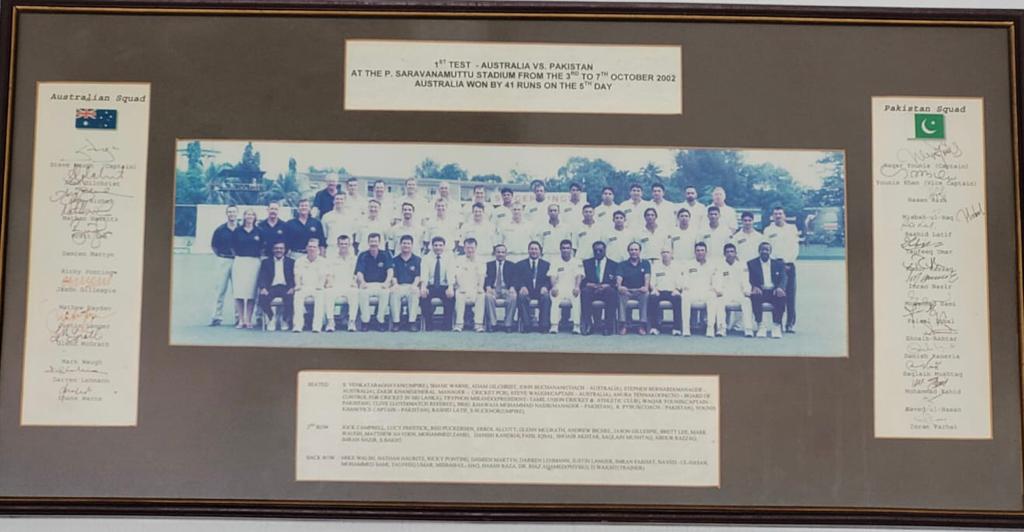For a cricket aficionado, a visit to P Sara Oval is an enriching experience. You can spend hours and hours together by just watching all those treasured gems in the form of photos. Alongside being steeped in tradition and history, the idyllic facade surrounding the ground compels you to visualise cricket being played in a completely different era. One such memory that is associated with the ground is Sir Don Bradman playing a one-day match against Ceylon on 27 March, 1948.
The Bradman-led 1948 Australian squad was touring England for the Ashes. The squad boarded RMS Strathaird at Fremantle on 19th of March. On their way to England, the Australian unit stopped over in Colombo to play a single-innings, one-day game. The ‘Invincibles’ had an array of stars – Sydney Barnes, Arthur Morris, Keith Miller, Lindsay Hassett, Sam Loxton, Ian Johnson, Ray Lindwall, Don Tallon and co. But the fans waited with bated breath to watch one player, and that was Bradman.
The local Islander newspaper ran a headline, “Bradman will definitely play.” Soon, the stadium was packed with 20,000 fans. The story goes some had even climbed up on trees to watch the game. Soon, Bradman and M Sathasivam, the Ceylon team captain, walked out for the toss. In fact, the toss was a mere formality as Australia were supposed to bat first. At 10.15 AM, the match commenced.
After Bil Brown was dismissed LBW by S Coomaraswamy, Bradman walked out to bat. At 39, Bradman was at the fag end of his career. By 1945-46, he was constantly being laid low by fibrosis. Perhaps all that travelling also didn’t help as Bradman scratched around for his 20 runs against some untiring discipline from Coomaraswamy and B Heyn. Incidentally, if you do a Google search, you might end up finding a still photo of Bradman eyeing the late cut off Coomaraswamy, only to be beaten on the outside edge.
Ultimately, after taking singles through mostly covers, point and in front of square on the on-side, he offered a catch to Robert L de Kretser off Heyn. There was said to be complete silence at the stadium. The hushed silence at the ground was synonymous with the dark clouds hovering above.
Intriguingly, by then, Australia had started to wonder whether the length of the pitch was 22 yards. At lunch break, Johnson asked the pitch to be measured and it was a couple of yards short. So, the bowlers ended up bowling from a couple of yards behind the crease. Eventually, the one-innings game ended in a tame draw.
Some 18 years before, Bradman had played in Sri Lanka, but at Colombo Cricket Club, also known as Maitland Crescent. Although Bradman had a successful series against England at home, in 1928, he was yet to touch his prime. The great cricketer did look more at home in that game before curiously getting out hit wicket on 40 while facing Neil Joseph. Just a few months later, Bradman had become an icon in the cricketing landscape, accumulating an astonishing 974 runs in the Test series in England.
There are other treasured gems in a chest full of rare historical photos. Garry Sobers, the legendary West Indies all-rounder, is seen standing alongside Sathasivam. Most likely the photo was taken during a match played between Ceylon and Ceylon Daily Mirror XI in 1960-61. Sobers, Conrad Hunte, Chester Watson, Rohan Kanhai and Wes Hall ended up playing for Mirror XI.
It shouldn’t be a surprise that there is a large picture of Muttiah Muralitharan, although no one at the ground seemed to know when it was clicked. The highest wicket-taker in both ODIs and Tests, played for Tamil Union Cricket. As you move around, you end up seeing Keith Fletcher and Bandula Warnapura walking out for the toss – the first-ever Test match played by Sri Lanka.
The England squad photo next to it even mentions Raman Subba Row, the manager of that touring side, and Beranrd Thomas, the famous England physiotherapist. Yes, the same physio who ended up attending to Terry Alderman, the Australian swing bowler, after he had injured his shoulder during an altercation with a spectator at the WACA in the 1982-83 Ashes.
Two-three years after Sri Lanka entered the Test arena, their moment in the sun had arrived – a historic Test win against India at P Sara Oval. A Public Holiday was declared by the Sri Lankan government to commemorate the occasion. The collection of photos at that ground includes a bit of action from that game as well.
In 2002, the great Australian side played Pakistan at neutral venues – PSS and Sharjah. Yes, there is a photo hanging on the wall, which includes players from both sides and signed autographs. This was the very Test where Mark Waugh, arguably the finest slip fielder the game has seen, ended up dropping three catches. One of those moments where you had to rub your eyes in disbelief. The younger Waugh hadn’t compiled a Test ton for a year, and the pressure was showing on him.
The eyes then ended up zooming on a red blazer. According to those present at the ground, the blazer was given to the best cricketer from Tamil Cricket Club during the 1970s. Just a few meters away, you end up seeing a large board showcasing all the matches that have been played at this ground. Once again you got a bit nostalgic after scrolling through a few of the matches played in the 1940s – CCA versus All India, All Ceylon versus India and All Ceylon going head-to-head against Australian Services.
Australian Services was led by Hassett and it had Keith Miller playing for them. Miller went on to dominate the Ceylon attack with a knock of 132. If you scratch the surface to get more information about that game, a report by Fran William Marien dated December 14, 1945, says, ” The fine Colombo ground has the best scoreboard outside Australia.”
As you walk back on the well-manicured greens of the stadium, there are quite a few stands named after Ceylon cricketers from a bygone era – Sathasivam and Coomaraswamy being the standout of the lot. It is also the same ground where Kumar Sangakkara, one of Sri Lanka’s greatest cricketers, bowed out of international cricket in 2015.
All those anecdotes, and all those treasured photos would be stored in the memory bank for many more decades, as I slowly made my way out of the stadium with my colleagues.
(With inputs from Neville Jayaweera’s blogs)





